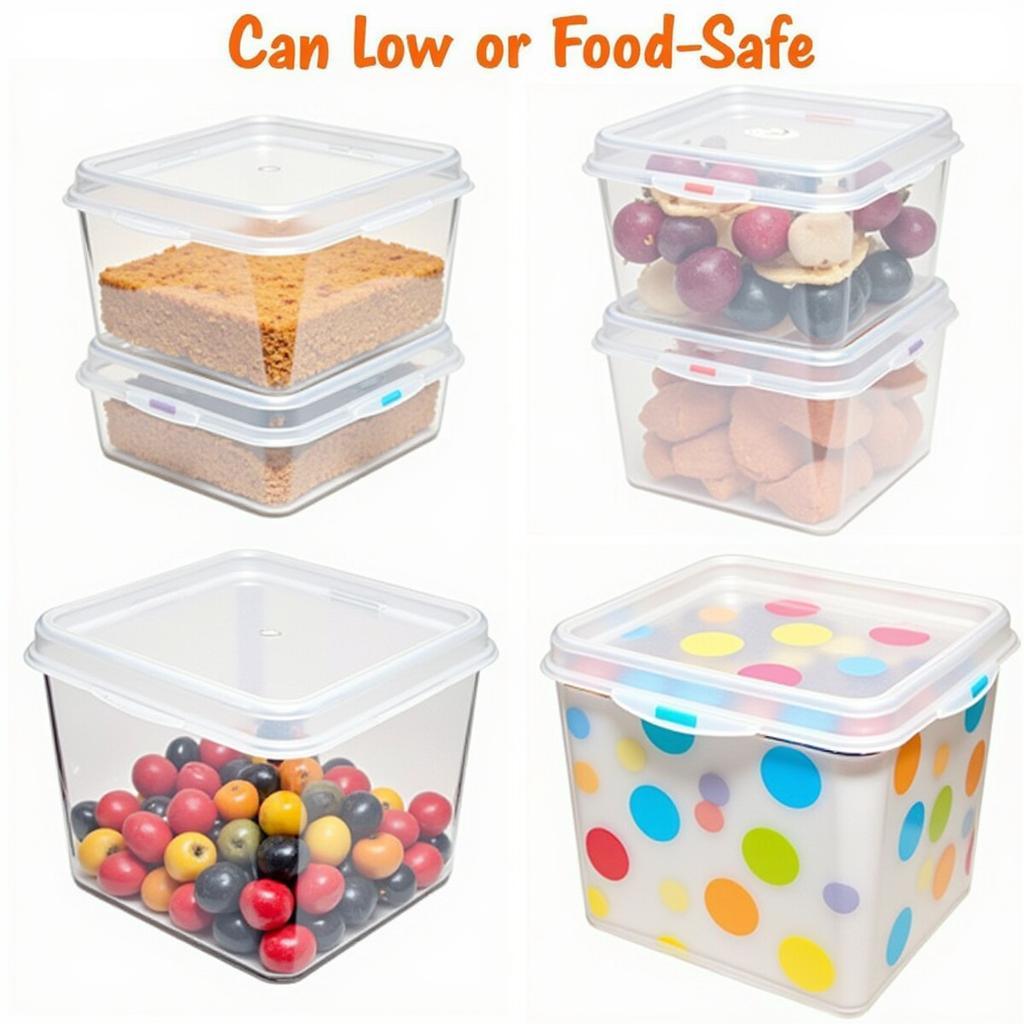Color Coded Food systems are becoming increasingly popular in kitchens, both professional and domestic. Whether you’re a seasoned chef or a home cook just starting out, understanding the benefits of color coding your food can revolutionize your organization and food safety practices.
Why Use Color-Coded Food Systems?
Color coding food isn’t just about aesthetics; it’s a powerful tool for maintaining a safe and efficient kitchen. It plays a crucial role in preventing cross-contamination, a major cause of foodborne illnesses. By assigning different colors to different food types, you create a clear visual system that minimizes the risk of accidentally using a cutting board that previously held raw meat for preparing vegetables.  Color-coded cutting boards for different food groups. This visual cue also helps in identifying potential allergens, aiding those with dietary restrictions. Beyond safety, color coding streamlines your workflow. Imagine quickly grabbing the right sized container for storage without having to rummage through a chaotic pile. Color coding brings order and efficiency to your kitchen.
Color-coded cutting boards for different food groups. This visual cue also helps in identifying potential allergens, aiding those with dietary restrictions. Beyond safety, color coding streamlines your workflow. Imagine quickly grabbing the right sized container for storage without having to rummage through a chaotic pile. Color coding brings order and efficiency to your kitchen.
Color Coding for Food Allergies
For those managing food allergies, color coding can be a lifesaver. Designating specific colors for allergen-free foods helps create a safe space in the kitchen, reducing anxiety and the risk of accidental exposure. It also makes it easier for family members or caregivers to prepare meals safely. color coding food This proactive approach fosters a more inclusive and stress-free dining experience for everyone.
Setting Up Your Color-Coded Kitchen
Getting started with color coding is easier than you might think. First, choose a color-coding system that works for you. Many commercial kitchens follow a standardized system, while home cooks can adapt it to their specific needs. You can use colored cutting boards, containers, stickers for food labels, or even markers to designate different food categories.
Choosing the Right Tools
Food safe stickers are a versatile and affordable option for color coding. They can be used on containers, shelves, and even individual food items. Make sure to choose stickers that are specifically designed for food contact to ensure they are safe and won’t leach harmful chemicals.  Food-safe color-coded stickers for labeling food containers. Durable, dishwasher-safe cutting boards in various colors are another essential tool.
Food-safe color-coded stickers for labeling food containers. Durable, dishwasher-safe cutting boards in various colors are another essential tool.
“Investing in a good set of color-coded cutting boards is one of the best things you can do for food safety in your kitchen,” says Maria Sanchez, a certified food safety instructor. “It’s a simple yet effective way to prevent cross-contamination and protect your family.”
Beyond the Basics: Advanced Color Coding Techniques
Once you’ve mastered the basics, you can explore more advanced color coding techniques. Consider using different shades of the same color to indicate different levels of processing. For example, light green for raw vegetables and dark green for cooked vegetables. You can also use color coding to track expiration dates, assigning a different color to each day of the week.
Maintaining Your System
The key to a successful color-coded system is consistency. Make sure everyone in your kitchen understands the system and follows it diligently. Regularly check your equipment for wear and tear and replace any damaged items to maintain the integrity of your color-coding system.
“Consistency is key,” advises Chef John Davis, a veteran of numerous professional kitchens. “Make sure everyone in your kitchen is on the same page when it comes to your color-coding system. This will ensure its effectiveness in preventing cross-contamination and maintaining a safe food handling environment.”
Conclusion
Color coded food systems offer a simple yet powerful way to enhance food safety and organization in your kitchen. From preventing cross-contamination to managing food allergies, the benefits are numerous. By implementing a color-coded system, you’re investing in a healthier and more efficient kitchen.
FAQ
- What is the most common color-coding system for food?
- Can I create my own color-coding system?
- Where can I purchase color-coded kitchen supplies?
- How do I clean color-coded cutting boards?
- Are there any specific regulations for color coding in commercial kitchens?
- Is color coding helpful for meal prepping?
- What are the best materials for color-coded containers?
You might also be interested in learning more about local food resources. Check out our article on food pantries in mchenry county.
For further support, please contact us at Phone Number: 02437655121, Email: minacones@gmail.com, or visit us at 3PGH+8R9, ĐT70A, thôn Trung, Bắc Từ Liêm, Hà Nội, Việt Nam. We have a 24/7 customer service team.